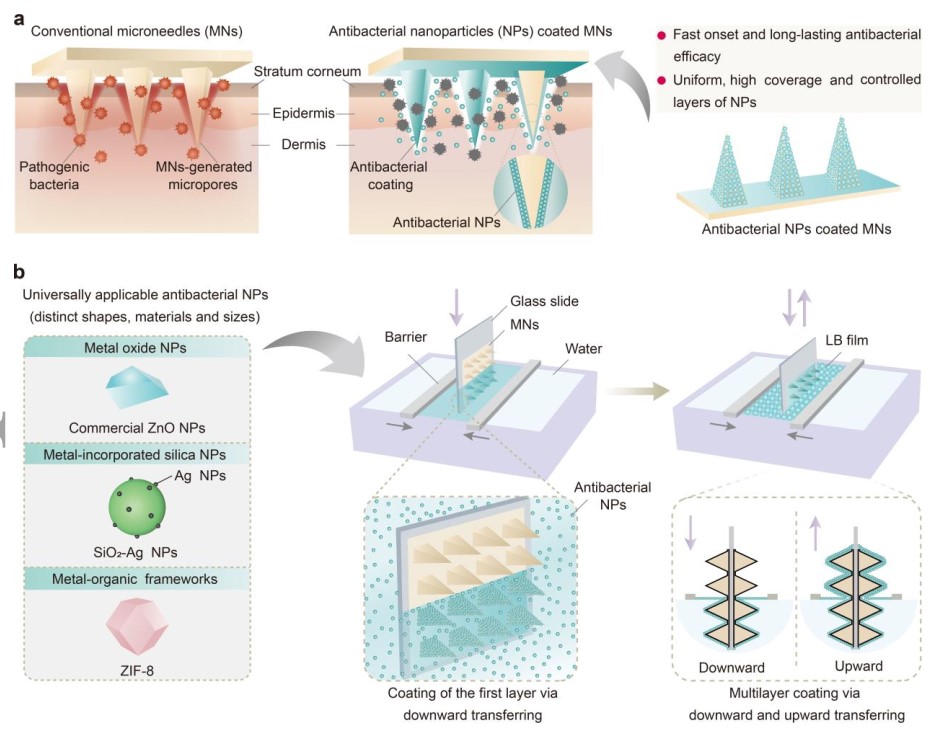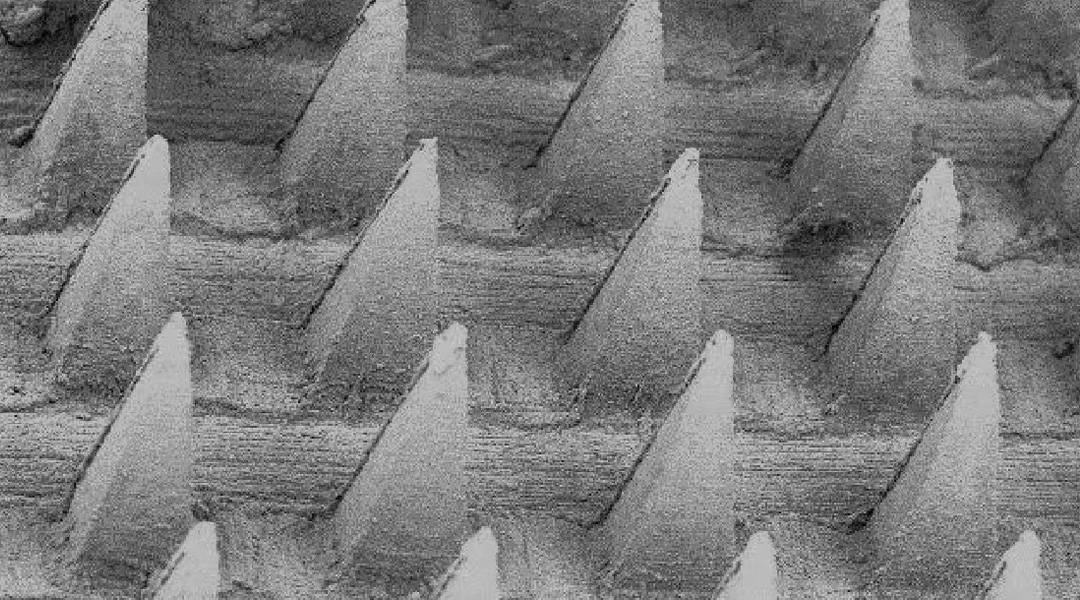Although many are afraid of needles, there are microscopic ones, called microneedles, that have emerged as a technology for painless and minimally invasive transdermal drug delivery. These tiny, needle-like structures typically range from 25 to 1,000 micrometers in length and 10 to 100 micrometers in width. They are designed to penetrate the outermost layer of the skin, to deliver medications or therapeutic substances into the underlying tissues.
Microneedles have found applications in various medical fields, including diabetes management, vaccination, dermatology, and cosmetic treatments. Moreover, “microneedles have emerged as a long-term transdermal drug delivery platform for sustained release with a duration of tens of hours or days,” said Guang Yang, associate professor College of Chemistry, Chemical Engineering and Biotechnology Donghua University in China.
Such long exposure carries the risk of skin infection since bacteria can make their way into the tissue through the passage microneedles make in the skin. With the aim of making long-term microneedle therapies safer, Yang and collaborators decided to study a coating method for adding antibacterial agents to the surface of microneedles.
In a study recently published in Advanced Materials, the scientists proved that coating the surface of microneedles with commercially available antibacterial nanoparticles using a method called the Langmuir-Blodgett technique, allowed a sustained antibacterial effect while maintaining a similar payload of the drug to deliver.
“This study reports a straightforward and general strategy for surface coating of microneedles with a functional nanoparticle thin film via the Langmuir-Blodgett technique,” Yang said. “We believe that this strategy establishes a novel platform for expanding the practical applicability and multifunctionality of microneedle technology.”
Manufacturing antibacterial microneedles
Other technologies have been tested for antibacterial purposes. The most common one is adding the antibacterial agents in the body of the microneedle together with the therapeutic agent, but as a drawback, it decreases the loading capacity. Others have tested depositing antibacterial agents in the microneedle surface but encountered issues such as the requirement of intricate methodologies, and a non-uniform and low surface coating.
Yang’s team chose to test the Langmuir-Blodgett coating method, a simple technique that only requires ethanol and water. “The Langmuir-Blodgett technique is a way of making thin films on solid substrates,” said Yang.
The test this method, the team coated microneedles made of Poly(lactic-co-glycolic acid) material with three different antibacterial nanoparticles: Zinc oxide, silver nanoparticles incorporated silica nanospheres, and zeolitic imidazolate framework-8. Through microscopic, chemical, and physical analysis, the scientists confirmed that the coated microneedles’ surfaces were uniformly and evenly covered in antibacterial nanoparticles, while maintaining the same shape of uncoated microneedles, which ensures skin penetration ability.

Testing antibacterial properties
First, Yang and the team tested the drug release properties of their coated microneedles using ibuprofen as a model drug. And when testing the microneedles in lab conditions, they found no differences between coated and uncoated microneedles on the loading capacity and the release pattern of ibuprofen over 20 days.
Then, to test the antibacterial properties of their coated microneedles, they chose a mouse model of bacterial skin infection. They treated the infected skin of mice with uncoated and coated microneedles and compared histological features after four days of treatment. The scientists found that the skin of mice treated with the coated microneedles did not display infection properties while those treated with uncoated ones showed bacterial infection signs.
These experiments provide evidence that coating microneedles with antibacterial nanoparticles using the Langmuir-Blodgett method gives antibacterial properties that could be applied for long-term therapies, paving the road for developing not only safer microneedle-based therapies but also opening a new way of delivering other molecules in the surface of microneedles. “Besides nanoparticles, some functional polymers are expected to be applied for surface coating of microneedles, which are ongoing in our team,” said Yang.
Reference: Ziyi Lu, et. al., Langmuir−Blodgett-mediated formation of antibacterial microneedles for long-term transdermal drug delivery, Advanced Materials (2023). DOI: 10.1002/adma.202303388

















